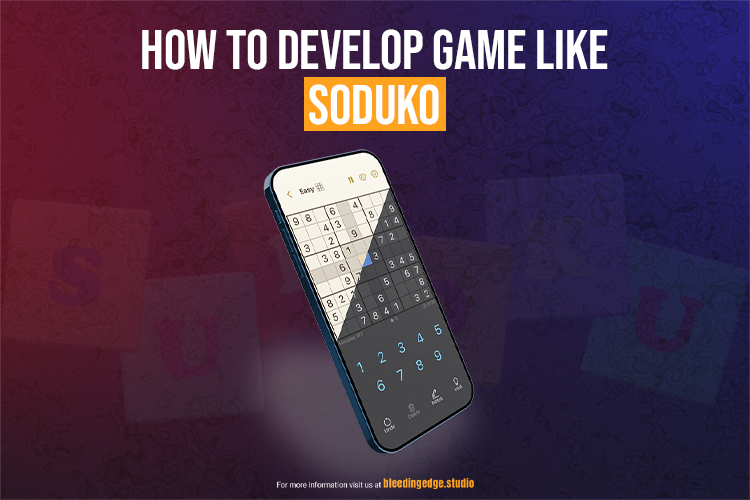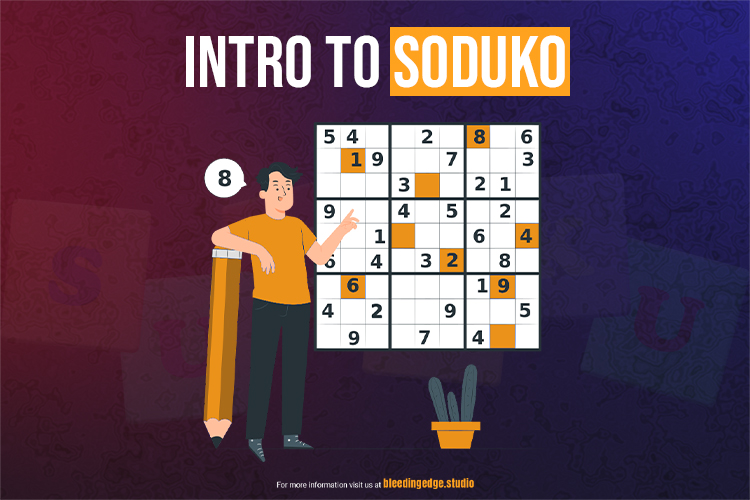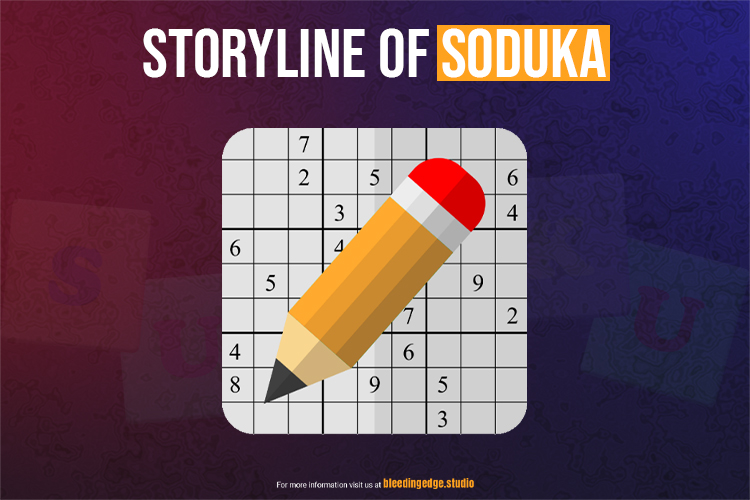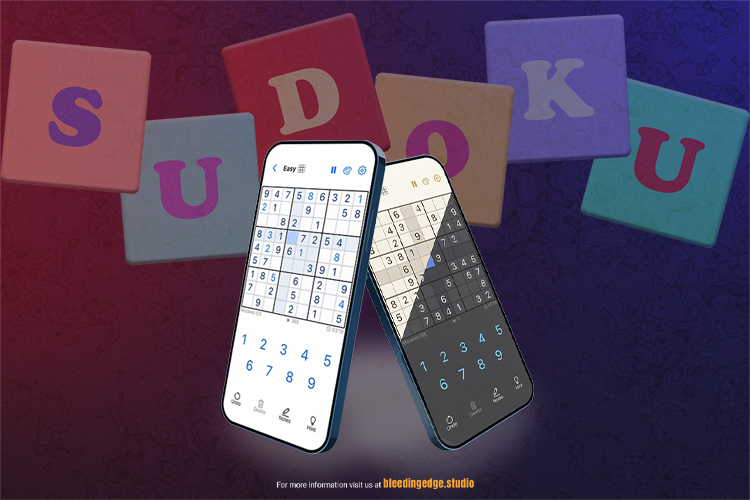How to Develop a Puzzle Game Like Sudoku in 2023
Puzzle games have a timeless appeal. They challenge our minds, provide a sense of accomplishment, and offer hours of entertainment. Sudoku, a number-placement puzzle, is a prime example of a simple yet addictive puzzle game that has captured the hearts of millions. If you’re interested in creating your own Sudoku-inspired game, this guide will let you walk through the process step by step.

The history of Sudoku:
is an exciting journey that spans centuries, with the modern version we know today emerging relatively recently. Here’s a brief overview of the evolution of Sudoku:
1. Ancient Origins (18th Century):
The origins of Sudoku can be traced back to Switzerland in the 18th Century when a mathematician named Leonhard Euler created a puzzle known as the “Latin Square.” Euler’s Latin Square was not precisely the Sudoku we know today, but it laid the foundation for later developments.
2. Magic Squares (19th Century):
In the 19th Century, French newspapers began publishing variations of Sudoku-like puzzles called “Magic Squares.” These puzzles involved arranging numbers in a grid so that the addition of the numbers or letters in each row, column, and diagonal was the same. While similar in concept to Sudoku, these puzzles were somewhat different from the modern version.
3. Development in the United States (Late 1970s)
The modern version of Sudoku that we are familiar with today only emerged in the late 1970s in the United States. Howard Garns, an American architect and freelance puzzle constructor, is credited with creating the first modern Sudoku puzzle. He published it in the Dell Magazine named “Number Place.” Garns’ puzzles were already recognizable as Sudoku with a 9×9 grid and the same basic rules we follow today.
4. Popularity in Japan (1980s)
Sudoku remained relatively obscure until it gained popularity in Japan in the 1980s. There, it was given the name “Sudoku,” which is a combination of the Japanese words “Su” (meaning “number”) and “Doku” (meaning “single”). Sudoku became a regular feature in Japanese puzzle magazines.
5. International Explosion (2000s)
Sudoku’s international popularity exploded in the early 2000s. The Times, a British newspaper, played a significant role in spreading Sudoku to the United Kingdom and beyond when it began publishing Sudoku puzzles. It quickly spread to newspapers, books, and online puzzle websites worldwide.
6. Competitive Sudoku (2000s)
Sudoku tournaments and competitions emerged, showcasing the puzzle’s competitive aspects. The World Puzzle Championship started including Sudoku as one of its events in the early 2000s, further solidifying its status as a global phenomenon.
Today, Sudoku is a ubiquitous puzzle millions of people worldwide enjoy. It’s available in various forms and difficulty levels and has even inspired numerous spin-off puzzles and variations, both in print and digital formats. Its journey from Euler’s Latin Square to a global puzzle phenomenon is a testament to the enduring appeal of logic-based brain teasers.
Conceptualize Your Game Before you start coding, it’s essential to have a clear concept of your game. Decide on the core mechanics and any unique features you want to include. For Sudoku, the fundamental concept is placing numbers in a grid so that each row, column, and subgrid contains all digits from 1 to 9. Consider what makes your game distinct from traditional Sudoku and what will make players want to play it.
Choose a Development Platform:
The choice of the development platform depends on your expertise and target audience. Sudoku games are commonly developed for mobile devices (iOS and Android) and web browsers. Popular development tools and languages for these platforms include:
Unity (C#): Ideal for 2D and 3D games, Unity is excellent for cross-platform development.
JavaScript (HTML5):
Great for web-based Sudoku games, utilizing HTML, CSS, and JavaScript can create a seamless gaming experience across browsers.
Swift (iOS) and Java/Kotlin (Android) are the primary languages for developing Sudoku games on mobile platforms.
Design the User Interface (UI):
A clean and intuitive user interface is crucial for a puzzle game like Sudoku. Consider the following elements:
Grid: Create a 9×9 grid where the Sudoku puzzle will be played. Ensure it’s easy to tap or click on cells to input numbers.
Buttons: Design buttons for functions like ‘New Game,’ ‘Check,’ ‘Undo,’ and ‘Reset.’ Make sure they’re visually distinct and easy to use.
Timer: Implement a timer to record how long players solve puzzles.
Hint System: If desired, include a hint system to guide players through challenging puzzles.
Scoring System: Consider adding a scoring system that rewards players for solving puzzles quickly and accurately.
Implement the Sudoku Logic
The heart of any Sudoku game lies in its logic. You’ll need to create algorithms to:
Generate Sudoku puzzles of varying difficulties.
Check whether a player’s input is correct.
Provide feedback on incorrect entries.
Solve Sudoku puzzles programmatically for hints or solutions.

Testing and Balancing:
Thorough testing is essential to ensure your game is bug-free and enjoyable. Test it on different devices and platforms for compatibility. Balance the game’s difficulty levels to cater to novice and experienced players.
Add Graphics and Sound
Enhance the player experience by adding graphics and sound effects. These can include backgrounds, animations for solving puzzles, and pleasant sounds for interactions and feedback.
Optimize for Performance
Optimize your game for performance, especially for mobile platforms. This involves minimizing memory usage, optimizing graphics, and ensuring smooth gameplay.
Testing and QA
Engage in rigorous testing and quality assurance (QA) to identify and fix bugs or issues. Ensure your game runs well on different devices and resolutions.
Publish and Market Your Game
Once your Sudoku game is polished and ready, it’s time to release it to the world. Here’s what to do:

Publish on App Stores: If you’re developing for mobile, submit your game to the Apple App Store and Google Play Store. Follow their guidelines for app submission.
Web Hosting: For web-based games, find a reliable web hosting service to host games online.
Marketing: Create promotional materials, such as a game trailer, screenshots, and a description. Use social media, game forums, and app review sites to promote your game.
Monetization: Decide on your monetization strategy, whether it’s through ads, in-app purchases, or a one-time purchase fee.
Gather Feedback and Update
After releasing your Sudoku game, actively seek feedback from players. Listen to their suggestions and fix any issues that arise. Regularly update your game with features and puzzles to keep players engaged.
Creating a Sudoku-inspired puzzle game can be a rewarding endeavor. With careful observation, dedication, and attention to detail, you can develop a game that challenges and entertains players while showcasing your creativity and programming skills. Remember that the key to a beautiful game is a balance between engaging gameplay and a user-friendly interface. Good luck with your Sudoku game development journey!
User-Friendly Input makes it easy for players to input numbers into the grid. Consider adding features like auto-highlighting the current row and column to help users keep track of their selections. A number pad or other intuitive input methods can enhance the user experience.
Save and Resume Game Progress
Allow players to mark their progress and resume games later. This feature is essential for longer, more challenging puzzles, as players may need more time to complete them in one sitting.
Incorporate leaderboards to encourage competition among players. Consider adding achievements or badges for completing specific challenges or solving puzzles within certain time limits. This can boost player engagement.
Themes and Customization
Give players the option to customize the game’s appearance. Themes, backgrounds, and different visual styles can add personalization and appeal to a broader audience.
Accessibility Features
Ensure your game is accessible to various players, including those with disabilities. Provide options for adjusting text size, colors, and audio cues. Implement accessibility standards like screen reader support.
Analytics and User Data
Integrate analytics tools to collect data on player behavior. This information can help you understand how players interact with your game, where they might get stuck, and which features are the most popular. Use this data to make informed updates and improvements.
Multiplatform Compatibility
Consider making your game compatible with multiple platforms (e.g., iOS, Android, web, desktop) to reach a broader audience. Cross-platform development frameworks can save time and effort.
Multiplayer or Social Integration
Add multiplayer modes or social features like sharing accomplishments on social media. Multiplayer Sudoku can introduce new dimensions of competition and cooperation.
Localization
Translate your game into multiple languages if you plan to target a global audience. Localization can significantly expand your game’s reach.
Legal Considerations
Ensure you have the legal rights to use your game’s assets, music, or trademarks. Consider consulting with a legal expert to understand licensing and copyright issues.
Monetization Strategies
Decide on your game’s monetization strategy early. Options include free-to-play with ads, in-app purchases for hints or customization options, or a one-time purchase fee. Choose a strategy that aligns with your target audience and your game’s value.
Community and Support
Create a platform for players to provide feedback, report bugs, and seek assistance. Engaging with your player community can foster loyalty and help you improve your game over time.
Updates and Expansion
Plan for post-launch updates and expansion packs. Regularly adding new puzzles, features, and challenges can keep your game fresh and encourage player retention.
Stay Informed
Stay up-to-date with trends in puzzle gaming, user interface design, and mobile/web technologies. This will help you adapt your game to changing player expectations.
Developing a puzzle game like Sudoku is a creative endeavor that involves programming skills and a deep understanding of user experience and game design. By carefully considering these additional points, you can create a game that challenges players and keeps them coming back for more, ensuring the long-term success of your project.
Sudoku became a popular puzzle game with a broad scope and evolving trends. Here are some trends and the scope of Sudoku games as of that time, although it’s important to note that the gaming industry is dynamic and subject to change:
**1. Digital Dominance:
Mobile Gaming: Sudoku games found a new home on smartphones and tablets, making them highly accessible to a broad audience. Mobile apps allow players to enjoy Sudoku on the go.
**2. Variations and Themes:
Themed Sudoku: Developers introduced themed Sudoku games that incorporated elements like emojis, symbols, and pictures instead of numbers, adding a fresh twist to the classic gameplay.
Variations: Sudoku inspired the creation of many new puzzle types, such as Killer Sudoku, Jigsaw Sudoku, and Hyper Sudoku, catering to players seeking unique challenges.
**3. Online Multiplayer:
Some Sudoku games added online multiplayer modes, allowing players to compete or collaborate with others in real time.
**4. Puzzle Generators:
Sudoku puzzle generators became more sophisticated, creating puzzles with various difficulty levels and customizable options.
**5. Artificial Intelligence:
AI-driven Sudoku solvers and assistants emerged, which could help players with hints or solve puzzles for them.
**6. Educational Value:
Sudoku’s educational benefits in improving logic, critical thinking, and problem-solving skills continued to be recognized, leading to its inclusion in educational apps and curricula.
**7. Competitions:
Sudoku competitions grew in popularity. National and international Sudoku championships attracted enthusiasts from around the world.
**8. Market Expansion:
The Sudoku market expanded to include merchandise like Sudoku-themed books, puzzles, clothing, and accessories, indicating the game’s enduring appeal.
**9. Accessibility and Inclusivity:
Sudoku games incorporated accessibility features, such as adjustable font sizes and color schemes, making them more inclusive for players with visual impairments.
**10. Cross-Platform Play:
– Some Sudoku games allow players to start a game on a device and continue on another, providing a seamless cross-platform gaming experience.
**11. Social Integration:
– Social media integration enabled players to share their Sudoku achievements and compete with friends.
**12. Monetization Strategies:
– Developers explored various monetization strategies, including free-to-play with ads, in-app purchases for hints or themes, or premium versions with additional features.
**13. Localized Content:
– Sudoku games were often localized into multiple languages to reach a global audience.
The scope of Sudoku games remained promising, with opportunities for developers to innovate, reach new audiences, and monetize their creations. However, the precise trends and scope in 2023 may have evolved, so it’s advisable to research the current state of Sudoku games for the most up-to-date information.
In conclusion,
Sudoku is a timeless and beloved puzzle game that has evolved significantly. Its journey from Euler’s Latin Squares in the 18th Century to the modern digital era is a testament to its enduring appeal.
Sudoku games have successfully transitioned to mobile devices, making them highly accessible to a broad audience.
Variations and Themes: Themed Sudoku and variations of the classic puzzle were on the rise, adding novelty to the gameplay.
Online Multiplayer: Sudoku games increasingly offer online multiplayer modes for competitive and collaborative play.
Puzzle Generators: Sophisticated puzzle generators cater to players seeking various difficulty levels and customizable options.
Educational Value: Sudoku’s educational benefits continued to be recognized, leading to its inclusion in educational apps and curricula.
Competitions: Sudoku championships and competitions attracted enthusiasts globally.
Market Expansion: Sudoku-related merchandise and products expanded the market beyond digital games.
Accessibility and Inclusivity: Developers prioritized accessibility features, making Sudoku games more inclusive.
Cross-Platform Play: Seamless gaming experiences across different devices were becoming more common.
Social Integration: Players could share achievements and compete with friends on social media.
Monetization Strategies: Developers explored various monetization methods to sustain their Sudoku games.
Localized Content: Sudoku games were localized into multiple languages for a global audience.
Sudoku’s enduring popularity, educational benefits, and adaptability to new technologies ensured its place in puzzle gaming. However, the gaming industry is dynamic, and trends may have evolved since then. Therefore, it’s essential to research the most current developments to fully understand the present and future of Sudoku games in 2023 and beyond.
For more topics. see https://bleedingedge.studio/

